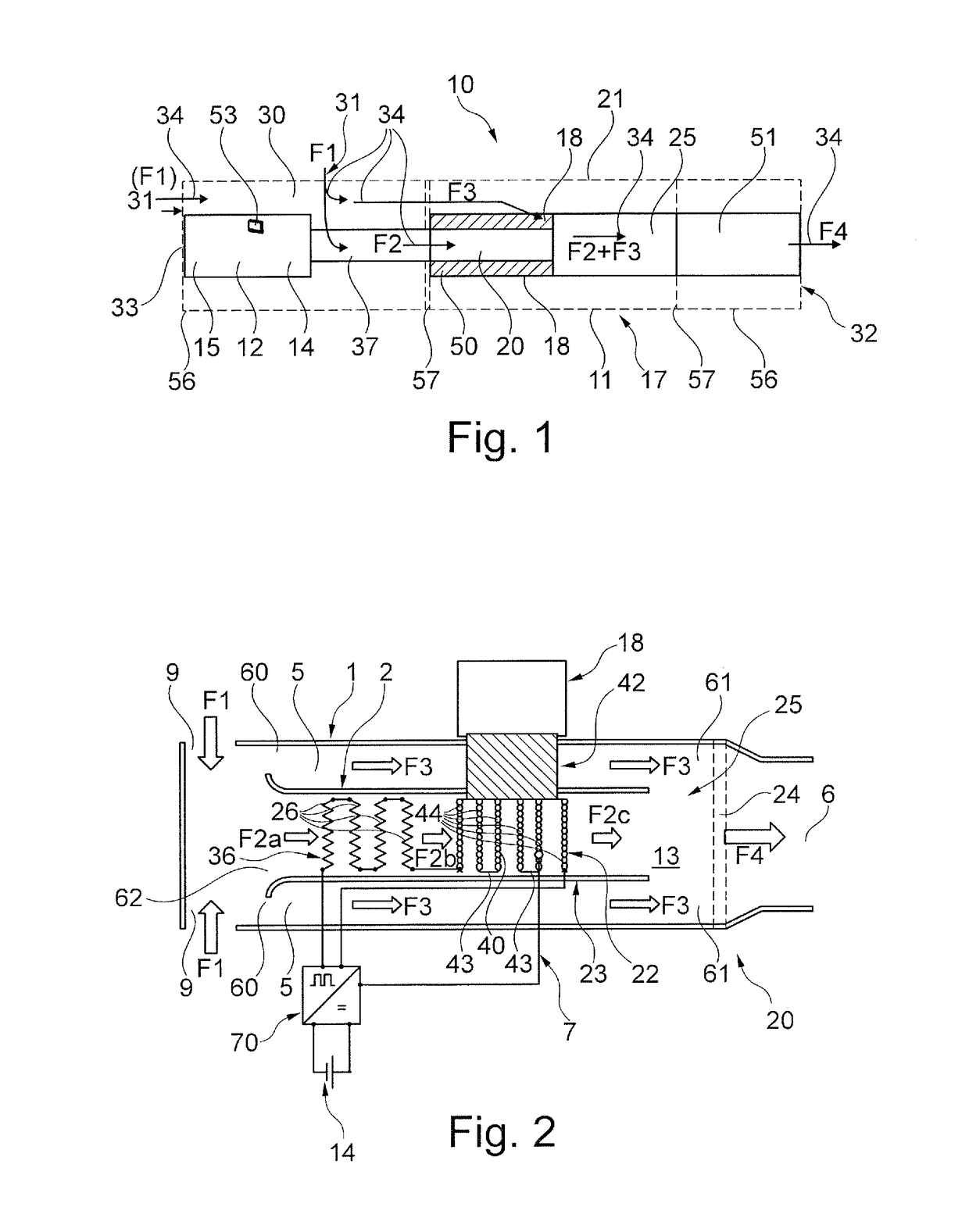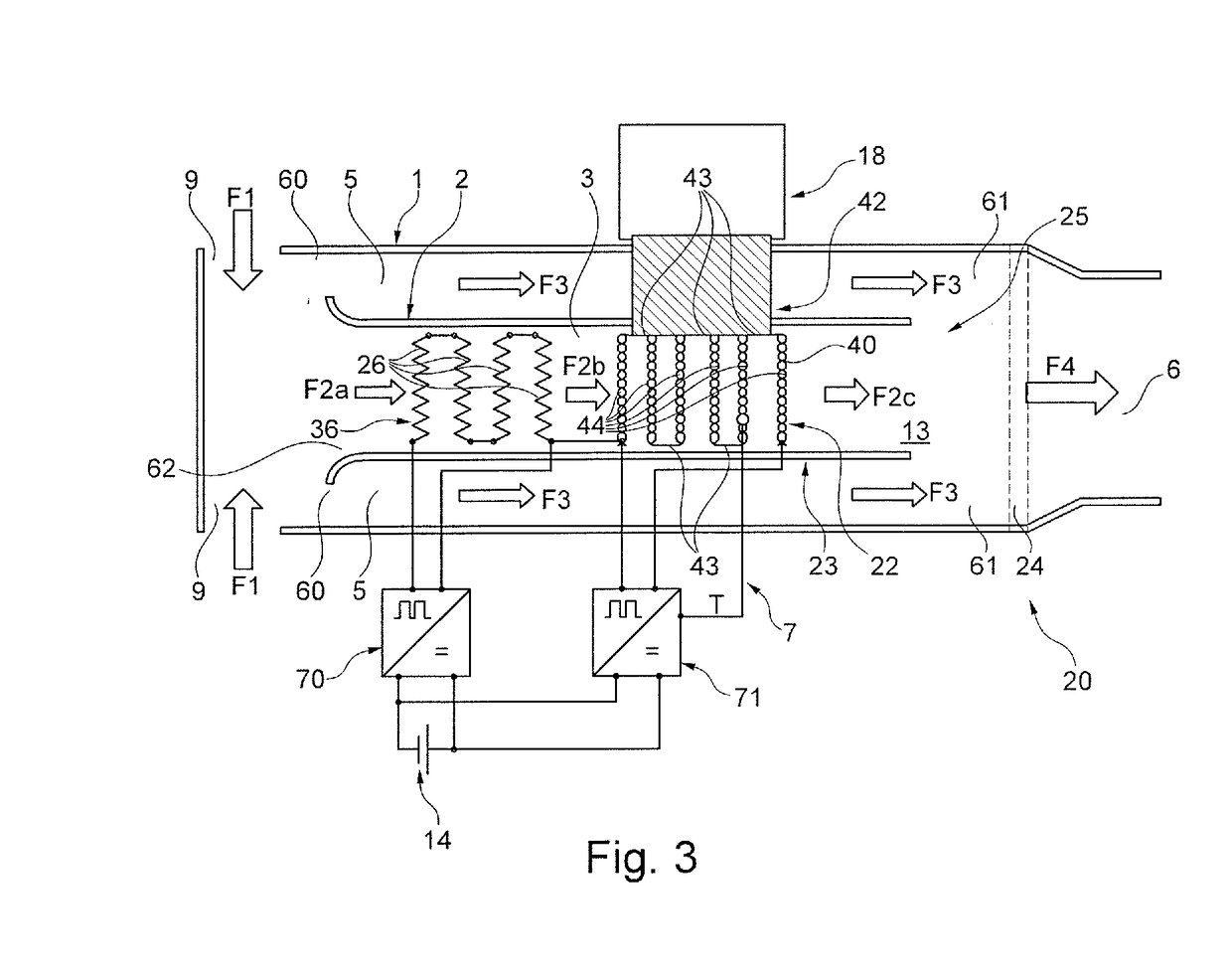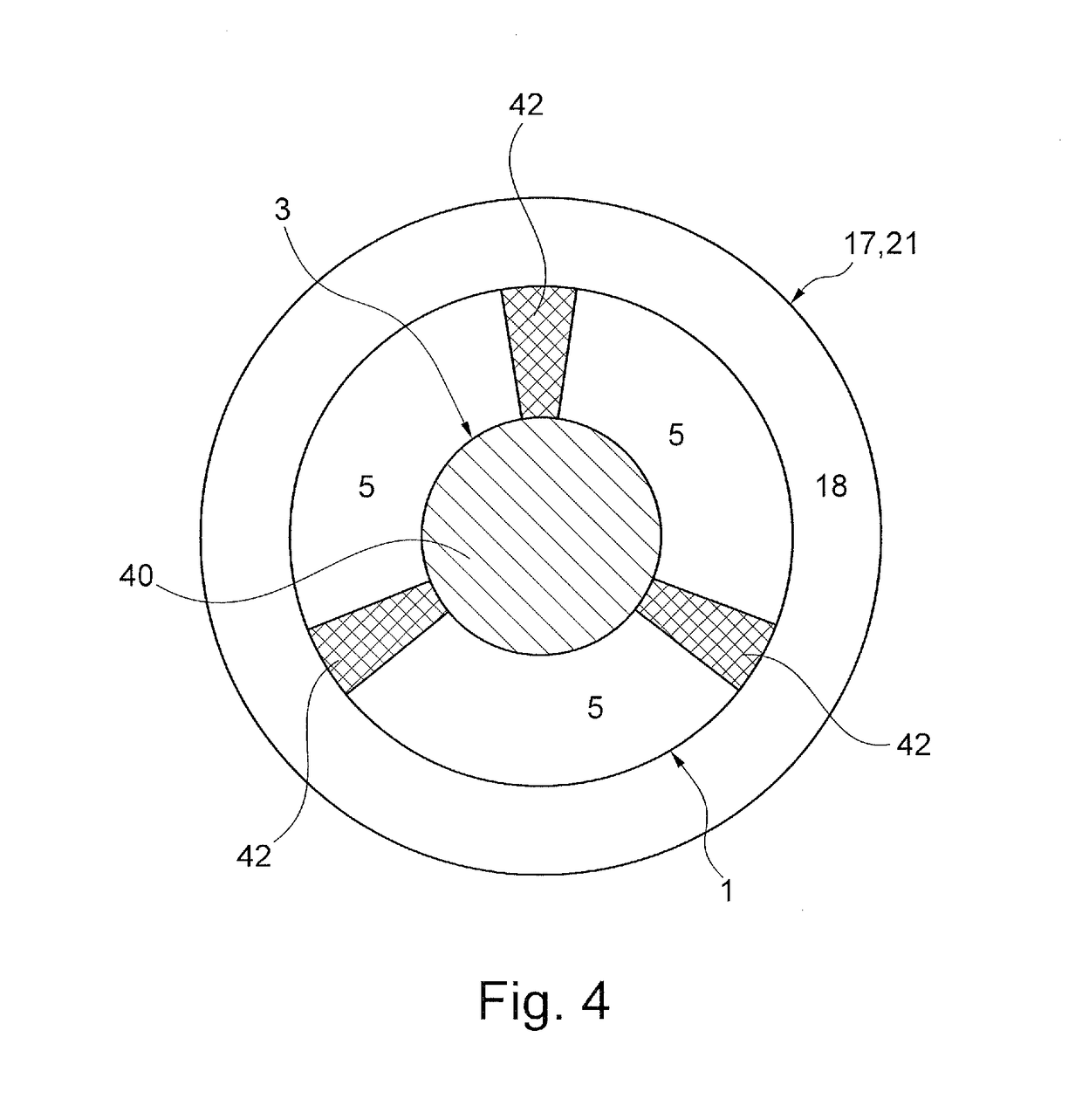Evaporator unit for an inhaler and method for controlling an evaporator unit
a technology of evaporator unit and inhaler, which is applied in the direction of ohmic-resistance heating, electrical equipment, tobacco, etc., can solve the problems of significant overheating point, harmful decomposition products, and method disadvantages, so as to achieve the effect of optimising the energy input of heating element and reliably avoiding undesirable production of decomposition products
- Summary
- Abstract
- Description
- Claims
- Application Information
AI Technical Summary
Benefits of technology
Problems solved by technology
Method used
Image
Examples
embodiment 1
[0091]2. Evaporator unit (20) , characterised in that the capillary structure (40) consists of an electrically conductive material.
embodiment 2
[0092]3. Evaporator unit , characterised in that heating element (36) is designed to heat the airflow to a temperature above a boiling point of the liquid mixture, and / or in that the capillary structure (40) is designed to heat the liquid to a temperature below a boiling point of the liquid mixture and / or to a temperature of at least 100° C., preferably at least 150° C., more preferably at least 200° C. and even more preferably at least 250° C.
[0093]4. Evaporator unit according to any of the preceding Embodiments, characterised in that the capillary structure (40) is heatable by means of a first electrical / electronic unit (70), the first electrical / electronic unit (70) being designed to control the heating element (36).
[0094]5. Evaporator unit according to any of the preceding Embodiments, characterised in that a first electrical / electronic unit (70) is designed to control the heating element (36), and the capillary structure (40) is heatable by means of a second electrical / electron...
embodiment 10
[0100]11. Evaporator unit , characterised in that the connection means (42) is designed to feed liquid by means of capillary action.
PUM
 Login to View More
Login to View More Abstract
Description
Claims
Application Information
 Login to View More
Login to View More - R&D
- Intellectual Property
- Life Sciences
- Materials
- Tech Scout
- Unparalleled Data Quality
- Higher Quality Content
- 60% Fewer Hallucinations
Browse by: Latest US Patents, China's latest patents, Technical Efficacy Thesaurus, Application Domain, Technology Topic, Popular Technical Reports.
© 2025 PatSnap. All rights reserved.Legal|Privacy policy|Modern Slavery Act Transparency Statement|Sitemap|About US| Contact US: help@patsnap.com



